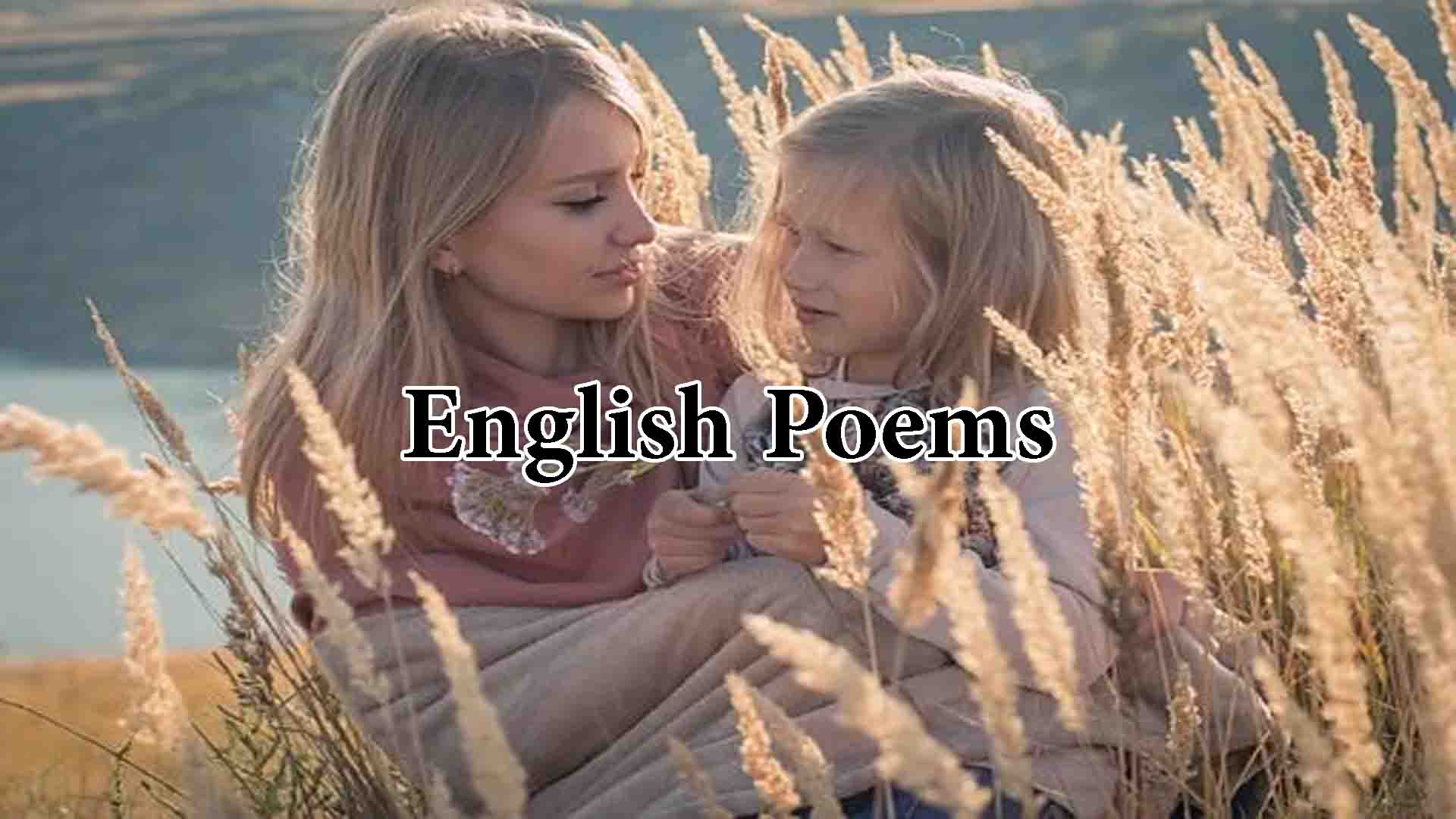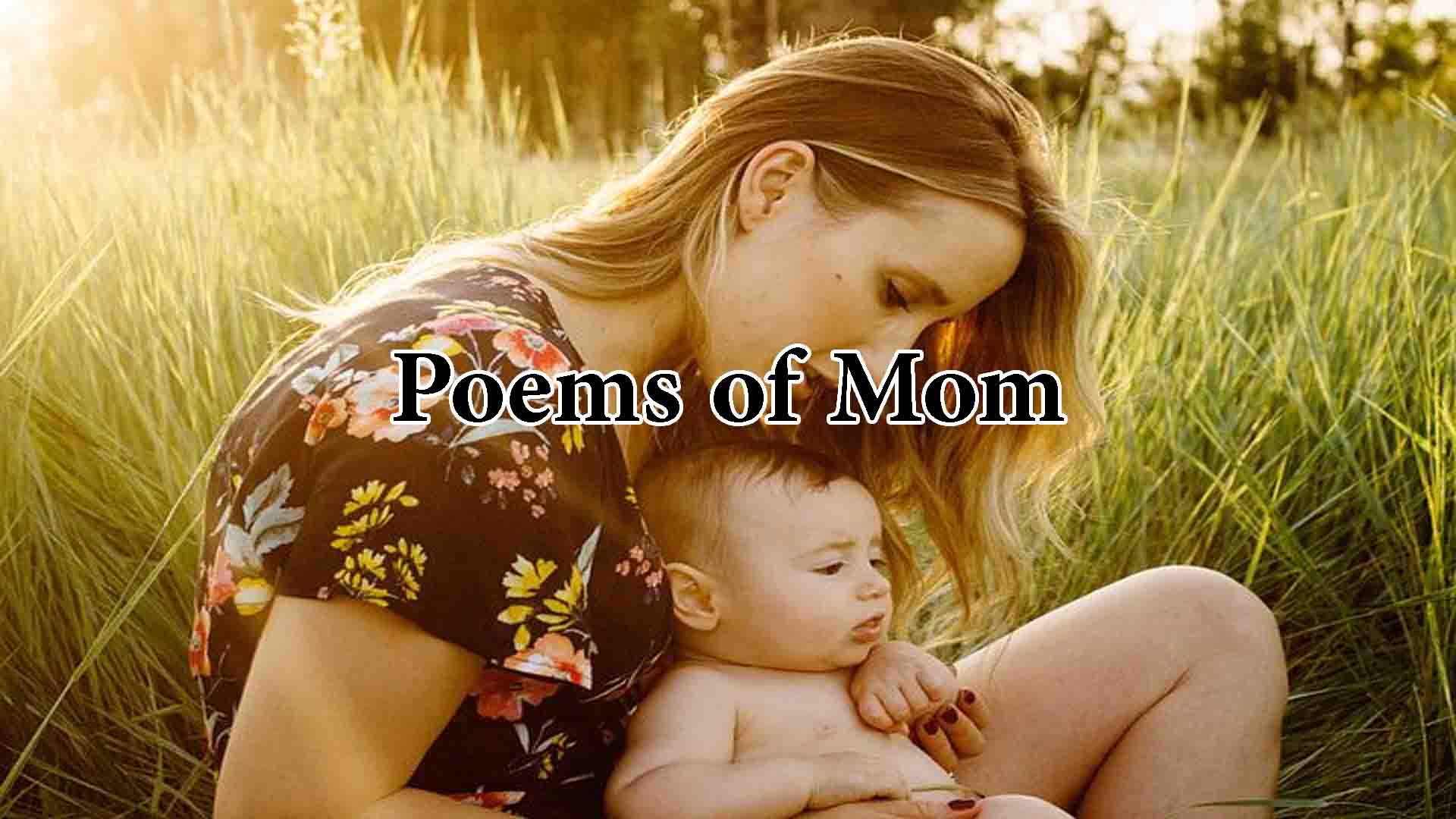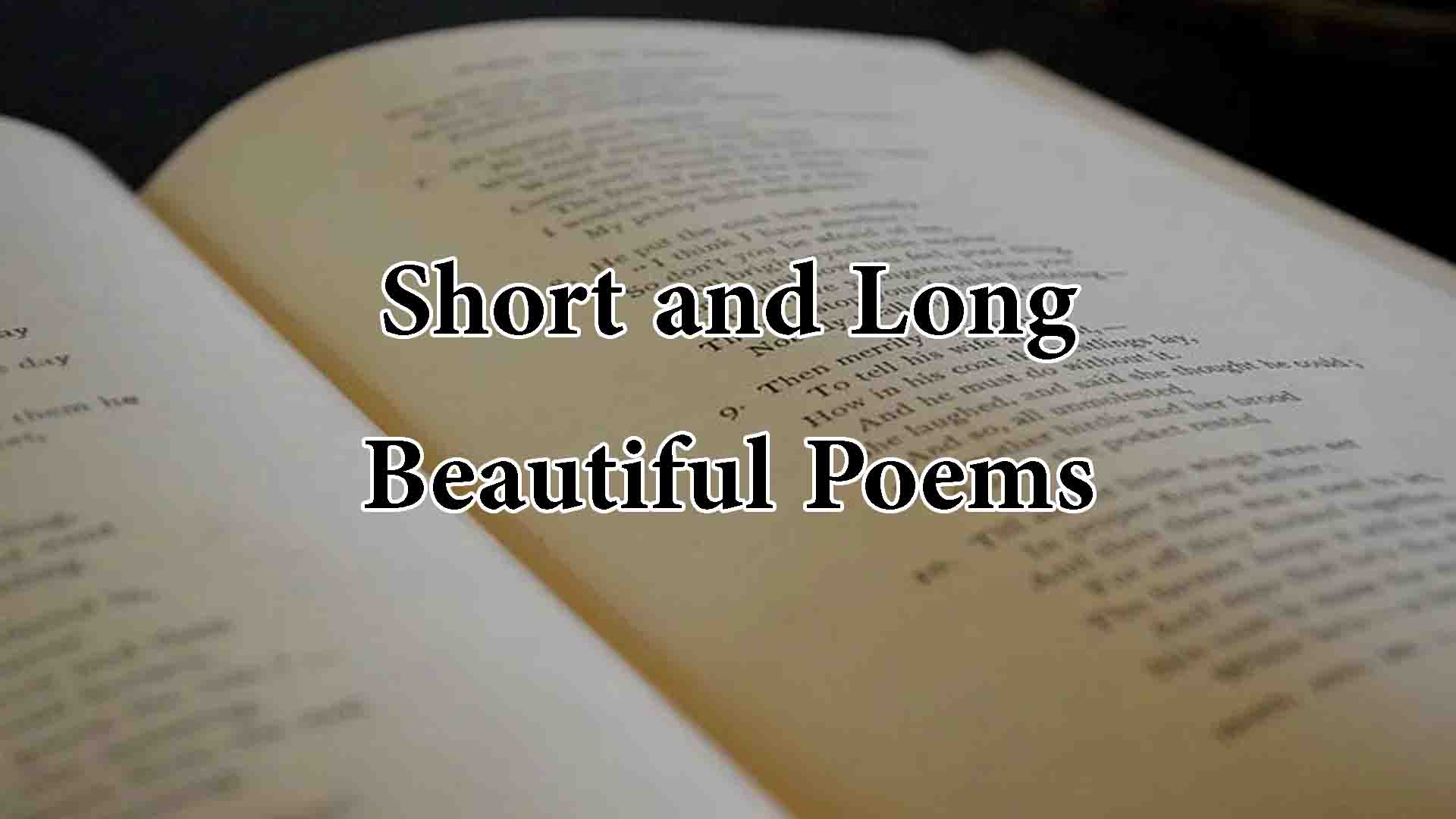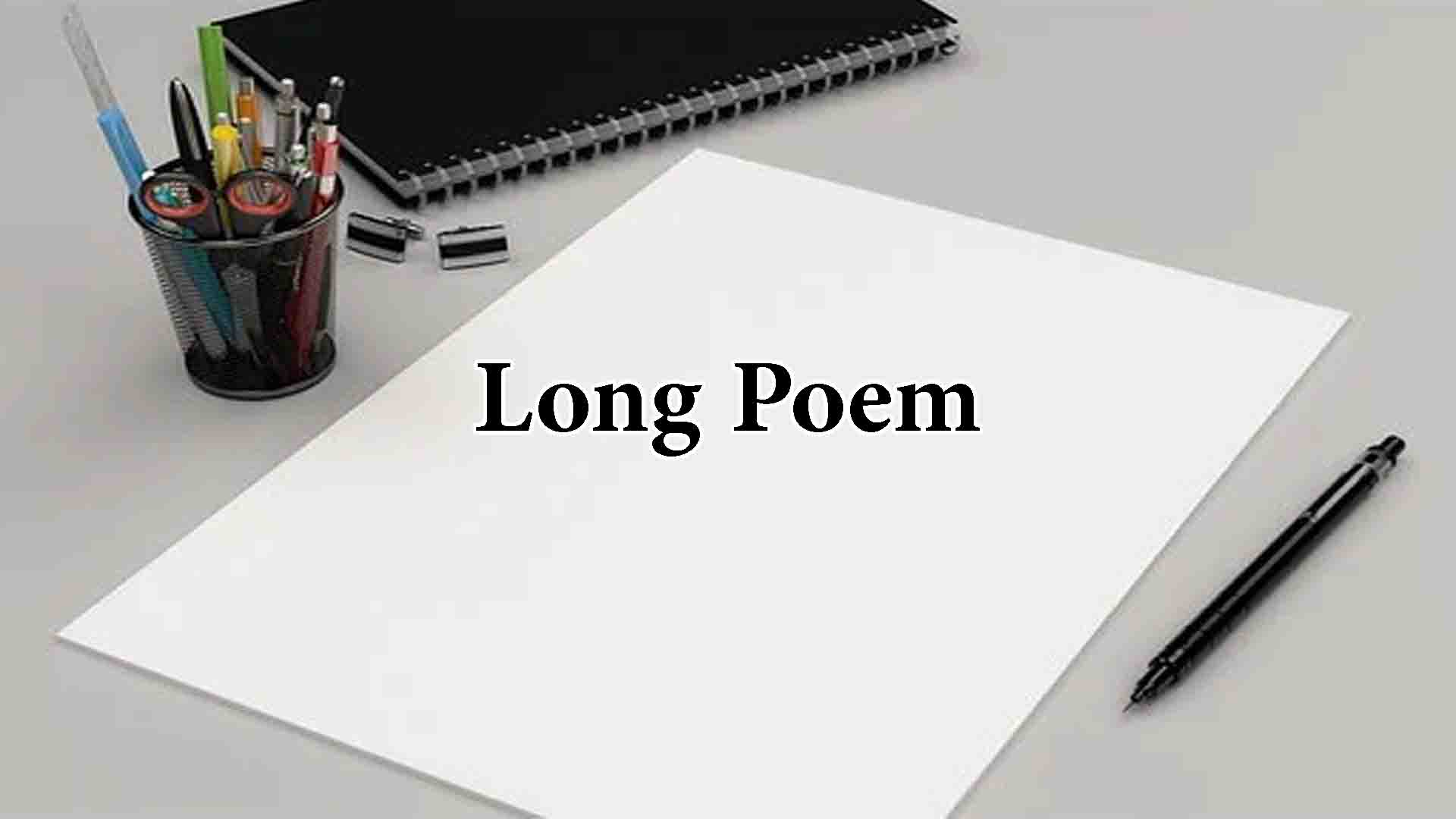Poems For Kids
Poetry is a literary composition that is recognized as an artistic expression of beauty or feelings through the word . A literary genre that can take the form of verse or prose. Poetry has evolved over time including more themes than love or war and has become one of the literary genres with the most followers.
Famous poems with rhyme and author – which one do you choose?
In ancient times , authored poems were dedicated to recounting the exploits and prowess of warriors in combat. In the Middle Ages a good number of romances arose, some poetic compositions that accompanied the music. The minstrels staged epic songs such as the Poema del Mío Cid. The poems were transmitted orally and underwent changes that could include the minstrels and the public, resulting in different versions.
An isometric stanza is called when all the lines that compose it have the same measure , that is, they have the same number of syllables. However, it is called a heterometric stanza when they do not have the same number of syllables.
In addition, the stanzas receive different names depending on the number of lines they have.. From 2 to 14 lines, and omitting those of 7, 9 and 11 (given their little or no tradition in Spanish), all the stanzas are classified. For example, of two stanzas it would be the couplet, of three the tercet, of four the quartet, the serventesio, the redondilla or the quatrain, of five verses the quintilla, the lira or the quintet, of six the sextet or the couplet of broken foot , of eight the octavilla, the copla de arte mayor or the real octave, of ten the tenth or spinel or of fourteen the sonnet.
types of rhyming poems
There are numerous types of rhyming poems , of which the best known in our tradition are the sonnet, the third, the quatrain, the lyre or the ballad.
| Love Poems | Short Poems | Friendship Poems | Nursery Rhymes |
| Long Poems | Short and Long Poems | Christmas Poems | Poems of Sadness |
| Poems for Dad | Poems for Mom | English Poems | Poems of Romanticism |
the sonnet
The sonnet is a composition of 14 hendecasyllable lines (of 11 syllables), composed of two quatrains (4-line stanza) and two triplets (3-line stanzas). The birth of the sonnet is located in Sicily from where it passed to central Italy. In the fourteenth century Dante Alighieri’s love sonnets, dedicated to his beloved Beatrice, were very important . But the most famous sonnetist of the century was the poet Petrarca in his Cancionero.
Thanks to Petrarch it spread through European literatures. The sonnet is used in Spain by poets such as Lope de Vega, Góngora, Calderón de la Barca, Sor Juana or Cervantes who used the variant of sonnet with estrambote.
the triplet
Another of the best known stanzas is the triplet composed of 3 hendecasyllable lines, the first and the third with rhyme.
One of the most used variants was the chained triplet used by Dante Alighieri in the Divine Comedy and which is made up of triplets that introduce a new consonant rhyme in its central verse in each triplet starting from the second: ABA BCB CDC DED EFE… Usually have three lines in each rhyme (except the initial and final rhymes, which have only two lines) and close with a final serventesio. A widely used stanza that was born in the Middle Ages but had its greatest success in the Renaissance that uses it in cultured poetry.
the quatrain
This stanza is composed of 4 eight-syllable lines (8 syllables each) in which the second and fourth lines have a consonant rhyme. A stanza of Castilian origin that in modern times is also used with assonance rhyme . What differentiates it from the serventesio is that the verses of the quatrain are minor art. There are varieties such as the imperfect quatrain, the asonatada or the heptasyllable.
The lyre
The lira is composed of five lines in which the first, the third and the fourth are seven syllables, and the second and fifth are hendecasyllables. The lyre was introduced to Italian literature by the poet Bernardo Tasso in his Amori (1534).
In the Spanish lyric it was introduced by the poet Garcilaso de la Vega , with Ode to the flower of Gnido that he composed when he was in Naples between 1532 and 1536. This stanza takes its name from the term lira that appears in the first line of the poem. This stanza, which Garcilaso used only once, will be widely used by authors such as Fray Luis de León and San Juan de la Cruz.
The love
A composition that has an indefinite number of octosyllable lines with assonance rhyme in even lines and free rhyme in odd lines . The Old Romancero is made up of anonymous ballads made by the community in the fourteenth and fifteenth centuries that come from the decomposition of medieval epic songs. They were spread orally and sung.
The poets of the New Ballads that took place in the 16th to 21st centuries composed imitating the style of the old ballads and spread their texts in written form through manuscripts or printed as loose sheets . Collectors kept these ballads in manuscript songbooks, made up of sewn booklets, which were sometimes printed. The new Romancero enriched the metrics of the romance and sometimes adapted it to the form of a lyrics with a refrain.
the tenth
The tenth is a stanza of ten octosyllable lines with consonant rhyme distributed according to modality. Spinel takes its name from the Malaga poet Vicente Espinel at the end of the 16th century, in which the structure of rhymes of the tenth in abbaaccddc was established. There can only be pauses after even lines, particularly after the fourth.
During the 17th and 18th centuries it was used by writers such as Lope de Vega and has been the favorite stanza of the Generation of 27 for poets such as Jorge Guillén or Gerardo Diego.
the ode
This composition is divided into equal stanzas and recounts the exploits of some characters . It was born in Ancient Greece where there were two types of odes: choral and sung with or without the accompaniment of a musical instrument.
The odes of Pindar, Sago, Anacreon and Horace were famous. In Castilian poetry, the odes of Fray Luis de León, Garcilaso de la Vega, Juan Nicasio Gallego or Espronceda stand out . In addition, those of authors such as Víctor Hugo in France, Manzoni and Bernardo Tasso in Italy and in Chile the well-known Elemental Odes of Pablo Neruda are well known.
the couplet
A poetic composition composed of 3 or 4 eight-syllable lines that serves as a popular song . A characteristic form of the anonymous popular tradition but that has been used by writers such as Rafael Alberti or Federico García Lorca.
The minor art couplets are distinguished , such as the romance quatrain, the seguidilla and the redondilla, and the major art couplets, which are couplets made up of eight lines with twelve syllables each . Of these verses, the first rhyme with the fourth, fifth and eighth, the second with the third and the sixth with the seventh.
the eclogue
It is a bucolic poem usually with a pastoral or country theme that deals with the love between shepherds . Sometimes the characters dialogue as if it were a small theatrical piece. The first eclogues were the Idylls of Theocritus but it was the Latin writer Virgil who made them famous by adding autobiographical elements. In his works the protagonists are shepherds who, although they are imaginary characters, cover up some real character.
The genre was revived in the Renaissance with Bocaccio and Jacopo Sannazaro’s Arcadia. In Castilian literature , authors such as Juan de la Encina, Garcilaso de la Vega, Juan Boscán, Lope de Vega and Juan Meléndez Valdés stood out for their eclogues .
the elegy
The elegy is a long poem in which the poet expresses a feeling of pain, melancholy and sadness . The elegy can be written in free verse or in triplets. The Greek and Latin poets, in addition to sad themes, dealt with other pleasant ones in their elegies. It was used by authors such as Solon, Archilochus, Janophanes, Mimnermo or Dionysus Calco. The heroic elegy refers to when the tragedy is collective.
In Spain, the Coplas on the death of his father by Jorge Manrique , Lament for Ignacio Sánchez Mejías by Federico García Lorca or Elegy to Ramón Sijé by Miguel Hernández are famous.
the zejel
It is a stanza of Arab origin , introduced in Spain through Al-Andalus, which used to be accompanied by music. It consists of a chorus of two verses, which is followed by another three verses rhyming with each other (movement) and a fourth (return), which rhymes with the rhythmic sounds from before, which belongs to the chorus, thus announcing its repetition. All verses are octosyllables
Other famous poems with an author in Spanish
Other famous poems also stand out, such as the soleá or the copla de pie quebrado . The soléa is a verse with minor art verses and assonance rhyme in the first and third verses. A poem typical of Andalusian popular poetry and whose theme is usually loneliness or disappointment. Authors such as Federico García Lorca used this stanza.
The copla de pie quebrado is a stanza that combines octosyllable and tetrasyllable verses with consonant rhyme . It follows the following fixed layout: 8a 8b 4c 8a 8b 4c. It was widely used by the writer Jorge Manrique in his work Coplas a la muerte de su padre . They are also called “manriqueñas”.
-

English Poems for Kids | Nursery Rhymes and Poems
Poems in English are one of the most passionate and emotional artistic representations of literature, since writers who dedicate themselves to poetry…
Read More » -

Mothers Day Roses Are Red Violets Are Blue Poems for Mom
A mother’s love is unique and unforgettable. There is no love more pure and selfless than that of a mother day…
Read More » -

Poems for Dad | A Beautiful Poem That is for Dad
A nice way for kids to tell their father how much they love him and how much they need him…
Read More » -

Christmas Poems | Christmas Friendship Poems
Christmas poems are beautiful verse compositions that usually evoke wishes for peace and prosperity, love and friendship, hope and forgiveness. Christmas poems are…
Read More » -

Short and Long Beautiful Poems | Love Poems for Her Long Distance
Poems are literary compositions in which their authors express their feelings or ideas . They belong to the branch of literature called lyric…
Read More » -

Long Poems | Love Poems for Him Long Distance
When it comes to expressing the beauty of life and the world around us through written language, poetry has a…
Read More » -

Nursery Rhymes | Little Angel Nursery Rhymes
The preschool and primary stages are one of the most important moments in the lives of kids. They offer a…
Read More » -

Friendship Poems | Poems About Friendship Turning into Love
Friendship consists of sharing experiences and feelings with others, caring for each other. From all this emanate emotions that are worthwhile…
Read More » -

Short Poems | Short Missing You Poems
Short poems are a very old form of artistic expression that has been transformed over time, but has kept its essence. They express…
Read More »
